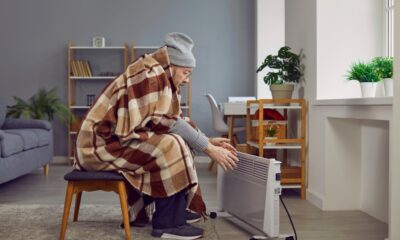5 Effective Strategies To Tackle Hormonal Migraines And Reclaim Your Life
Hormonal migraines are more than just a nuisance; they can significantly impact the lives of millions of women worldwide. These types of migraines are often linked to the ebb and flow of hormones like estrogen, making them particularly intense during specific times such as the menstrual cycle, pregnancy, or menopause. Understanding what triggers these hormonal headaches is essential for effective management and improving your overall quality of life.
When dealing with hormonal migraines, it’s crucial to recognize the very real connection between your hormonal changes and migraine occurrence. You might feel like your life revolves around the calendar, tracking your cycle, and dreading those days when the migraines strike. But there’s hope. By educating yourself about your symptoms and exploring the treatment options available, you can reclaim some control over your health and well-being.
The Science Behind Migraine Devices
In recent years, migraine management has evolved, thanks to the development of specialized devices designed to provide relief without medication. These migraine devices work by stimulating nerves or brain areas associated with pain processing. Unlike traditional pharmaceuticals, which can take a toll on your body or come with unwanted side effects, these devices provide a drug-free alternative, making them appealing for women who may be pregnant, breastfeeding, or undergoing hormone therapy.
Imagine having a compact, portable device that you can easily integrate into your daily routine. Some of these devices aim to prevent migraines before they start, while others come to the rescue at the first signs of an attack. Among the most recognized technologies are transcranial magnetic stimulation (TMS), transcutaneous electrical nerve stimulation (TENS), and vagus nerve stimulation (VNS), each targeting different pathways in the nervous system.
How To Choose The Right Migraine Device
Choosing the right migraine relief device can feel overwhelming, especially when you’re already dealing with the daunting effects of chronic pain. Start by asking yourself a few key questions to narrow down the options:
- What type of migraine do you experience? Devices often cater to specific types of migraines—such as hormonal or chronic. Be sure to check if they are FDA-cleared for your particular migraine type.
- Are you looking for preventive care or immediate relief? Some devices focus solely on prevention, while others are designed to offer relief once a migraine sets in. Consider whether you need daily management or something you can grab when needed.
- Is the device safe for your age group? Safety is key, especially if you’re considering options for teenagers or pregnant women. Always review age clearance and safety data before proceeding.
- How easy is the device to use, and can you take it on the go? Look for options that fit seamlessly into your lifestyle. Think wearables, app connectors, or discreet devices that are handy for travel.
- Is there clinical evidence and positive user feedback? Prioritize devices that have been clinically proven and FDA-cleared, along with encouraging reviews from real users. This helps ensure you’re investing in something that’s both safe and effective.
Effective Treatments for Hormonal Migraine: The Top 8 Devices
Here are some standout solutions that have garnered clinical backing and are frequently recommended by headache specialists:
1. CEFALY
Since its inception in 2008, CEFALY has been a trailblazer in migraine treatment technology. Their device, CEFALY Enhanced, has been embraced by leading healthcare professionals as a top choice for effective migraine relief. It targets the trigeminal nerve, known to be a culprit in migraine pain, and many users report significant relief within just one hour of use. With over a decade in the market and an impressive clinical backdrop, CEFALY Enhanced continues to stand out as a reliable, drug-free option.
Key Features:
– FDA-cleared
– Free shipping on all orders and a 90-day money-back guarantee
– No prescription required
– Clinically proven
– 3-year warranty
2. ElectroCore
Launched in 2005, ElectroCore specializes in the field of bioelectronic medicine. Their flagship product, the gammaCore™ device, utilizes noninvasive vagus nerve stimulation to provide drug-free headache relief. Users can enjoy this handy device as both a preventive measure and for acute treatment, offering flexibility depending on their needs.
Key Features:
– Clinically proven and FDA-cleared for use in adults and children aged 12 and up
– Effective for both prevention and acute relief
– Nearly half of users experience significant pain relief within two hours of the first use
– Portable design for convenient use anywhere
– Generally positive user reviews
3. TensCare
At TensCare, the goal is clear: they aim to improve lives through innovative, drug-free pain relief options. Their Mynd Migraine Relief device is a TENS unit that delivers small electrical currents, helping to alleviate headaches and potentially preventing future attacks. Its compact design means you can easily use it wherever you are.
Key Features:
– Slim and portable
– Rechargeable with a long-life battery
– 40 adjustable levels of intensity for personalized relief
– NHS recommended
– Cost-effective and eco-friendly
4. Salvia BioElectronics
Founded in 2017, Salvia BioElectronics is focused on revolutionizing migraine care through neuromodulation therapy. Their unique device employs gentle electrical pulses to target migraine-related nerves, providing a cutting-edge treatment option that has shown promise in other neurological disorders as well.
Key Features:
– Utilizes neuromodulation therapy for effective relief
– Led by industry veterans with vast experience
– Global reach with ongoing research for validation
– Acknowledged commitment to gender diversity, with 45% of the team being women
5. Migracorr
While the details on Migracorr’s specific product are extensive, the device operates using a patented pneumatic technology that offers a non-drug approach to relief. This option is particularly appealing for those seeking more natural means to handle their migraines.
By taking the time to explore these options, you’re setting yourself up for a more manageable migraine experience. You deserve to feel your best, and with the right tools, you can achieve just that. Whether you’re tackling hormonal changes or simply navigating life, knowing that there are trustworthy alternatives out there can offer some much-needed reassurance and hope.Imagine living with the constant fear that a migraine might strike at any moment—it’s exhausting and can leave you feeling helpless. Thankfully, there are groundbreaking medical devices that offer real solutions for migraine relief. These devices are designed not just to alleviate symptoms quickly, but to prevent future attacks through innovative, drug-free methods. If you’ve ever wished for a natural way to combat these debilitating headaches, you’ll want to learn more about these options.
One of the standout products on the market today is a device that utilizes a unique Dual Neuromodulation technique. This approach employs precise air pressure to stimulate both the trigeminal and vagus nerves at the same time, which can lead to significant relief in less than 15 minutes. Just think about it: no more waiting for pills to kick in or worrying about side effects. With just daily use, many users report a notable reduction in the frequency of their migraine episodes. It’s 100% natural, noninvasive, and there’s no need for prescriptions or refills. Imagine being able to take charge of your health without the worry of potential drug interactions—this device could be a game-changer for many.
Key Features:
– Dual neuromodulation stimulates two cranial nerves for effective relief.
– Achieve migraine relief in under 15 minutes.
– Regular use may decrease the frequency of attacks.
– 100% natural and drug-free treatment.
– No prescriptions or refills are required.
Another interesting option comes from LloydsPharmacy, a well-known healthcare provider that extends far beyond just filling prescriptions. They offer a device called the Migraine TENS pain reliever. This handy gadget uses transcutaneous electrical nerve stimulation (TENS) to deliver gentle electrical impulses through the skin, effectively blocking the pain signals your brain receives. It’s designed to be worn on your forehead with self-adhesive pads, providing immediate relief while also aiming to decrease the frequency of future attacks.
Key Features:
– A natural, medication-free alternative for migraine relief.
– Delivers targeted pain relief via direct nerve stimulation.
– Comes with a USB charging station, so no batteries are needed.
– Compact design for easy transport and usability.
– Simple application using replaceable adhesive pads.
Then there’s Neurolief, a pioneering company focused on mental health innovations, especially for those suffering from neurological and mood disorders. Their Revilion MG device represents a significant leap in noninvasive neuromodulation therapy. This wearable headset stimulates six branches of the trigeminal and occipital nerves—an intricate level of nerve engagement only previously achieved through more invasive procedures. What’s more, it connects to a robust digital platform, including a patient app that allows you to track your treatments and a physician dashboard for remote monitoring.
Key Features:
– Targeted stimulation for effective relief.
– Dedicated support coaches at your fingertips.
– User-friendly tech design ensures ease of use.
– Digitally track your therapy progress with detailed reports.
– Continued on-demand support whenever you need it.
Next up is eNeura, a forward-thinking company dedicated to providing innovative neurological treatments. Their sTMS Smart Diary offers a noninvasive therapy that’s FDA-cleared for treating acute migraine attacks and helping to prevent future ones. Utilizing low-frequency electromagnetic pulses, this device is designed to calm hyperactive brain nerves, allowing you to tackle your migraines at home conveniently—no hospital visits or complicated procedures necessary.
Key Features:
– Offers individualized patient support tailored to your needs.
– Rapid action to stop migraine attacks effectively.
– A noninvasive, medication-free therapy with easy tolerability.
– The smart diary automatically records your migraine treatment data for tracking.
– Personalized treatment options that adjust to your specific situation.
Soterix Medical is another name leading the charge in noninvasive treatments. With a strong background in clinical trials, their PainX® tDCS System offers a promising alternative to surgical procedures. Designed for individuals who haven’t found relief through traditional medications, this device has shown significant effectiveness without the need for invasive options.
Key Features:
– A leader in noninvasive neuromodulation technology.
– Patented technologies for enhanced treatment options.
– Treatment sessions lasting less than 30 minutes.
– Custom solutions for various conditions, including migraines.
– Designed with user comfort and ease of use in mind.
Lastly, we have EmeTerm, which utilizes TEAS and tDCS methods to deliver effective, safe relief from migraines. Their HeadaTerm 2 is FDA-approved and targets nerves on the forehead to address primary headaches, providing rapid, noninvasive relief without side effects.
Key Features:
– FDA-cleared for safety and effectiveness.
– Manual intensity control allows for personalized treatment.
– Rechargeable device for ongoing use.
– Delivers fast-acting relief thanks to eTNS technology.
– No prescriptions needed, making it accessible.
As you evaluate your options, it’s essential to understand the differences among these migraine relief devices. Each has unique features, technologies, and applications. By exploring what’s available—whether it’s a dual stimulation technique, TENS therapy, or the latest in neuromodulation—you can choose the one that best aligns with your needs and lifestyle.
You’re not alone in this fight against migraines; innovative solutions are available, ready to help you reclaim your days from the clouds of pain.TensCare Mynd stands out as a promising option for those grappling with migraines. This device utilizes Transcutaneous Electrical Nerve Stimulation (TENS) targeting the trigeminal branches, offering relief for both acute episodes and preventive measures. It’s designed for easy placement on the forehead, making it portable enough for anyone to use, whether at home or on the go. Being endorsed by the UK’s NHS adds another layer of credibility, showcasing its acceptance in clinical settings.
On a different technological front, the Salvia BioElectronics device is still in development, focusing on implantable neuromodulation. This advanced approach aims at various cranial nerves to prevent migraines, and it shows promise for long-term management once it progresses through evaluations.
For those seeking acute relief with preventive benefits, the Migracorr Migraine Stopper employs a unique pneumatic dual neuromodulation technique, targeting the trigeminal and vagus nerves. While it’s currently under review and not widely available, its design for on-demand relief makes it an exciting prospect for migraine sufferers.
Then there’s the LloydsPharmacy Device, which offers a straightforward TENS solution targeting the forehead nerves. Although not FDA-approved and limited to the UK, it provides home and travel-friendly relief, emphasizing ease of access for those in need.
Neurolief’s Revilion MG represents another layer of innovation with its multi-site neuromodulation approach, addressing six different nerves simultaneously. As a wearable device with remote monitoring capabilities, it’s geared towards preventive care, making it a high-tech solution to manage migraines more effectively.
The eNeura sTMS utilizes single-pulse Transcranial Magnetic Stimulation, focusing on cortical neurons for both acute and preventive relief. It’s suitable for home use and includes smart tracking features, offering a modern touch to migraine care.
Lastly, Soterix PainX® tDCS presents a transcranial direct current stimulation method primarily used in clinical research settings. It’s aimed at individuals with refractory migraines, spotlighting care within controlled environments.
Who Should Not Use Migraine Devices
When considering these innovative devices, it’s crucial to understand their limitations. Individuals with active medical implants, like pacemakers or cochlear implants, should avoid noninvasive vagus nerve stimulators due to potential interference. Those with a history of carotid atherosclerosis or cervical vagotomy should also proceed with caution. It’s important to be vigilant about issues like vasovagal syncope and any skin irritation around application sites.
If you’re pregnant or nursing, discussing device usage with a healthcare provider is essential. Not all devices are cleared for children or adolescents, so always check age restrictions for safety.
What Treatments Help With Hormonal Migraine?
Choosing a migraine device isn’t just about the technology; it’s about finding the right fit for your life. With some devices focusing on prevention and others on immediate relief, you can find a strategic partner for your migraine management. Reflecting on your frequency of migraines, triggers, and responses to treatments can guide your choice. Drug-free options provide specialized support without the worry of daily side effects, proving invaluable in long-term strategies against migraines.
What Are Hormonal Migraines?
Hormonal migraines are a complex form of a neurological disorder that affects 12% of adults globally. Known for their debilitating headaches, they often come accompanied by nausea, vomiting, and heightened sensitivities—to light, sound, and even touch.
Women face these challenges significantly more than men, largely due to hormonal fluctuations tied to phases like menstruation, pregnancy, and menopause. Recognizing these unique experiences is crucial for better migraines diagnosis and treatment specific to women. For instance, hormone-based treatments can be particularly effective during these significant life stages, helping to manage their migraine symptoms more effectively.
Navigating the world of migraines can feel overwhelming, but staying informed about available treatments and understanding the nature of the condition is a great first step toward finding relief. Your journey is unique, and the right tools are available to support you along the way.














